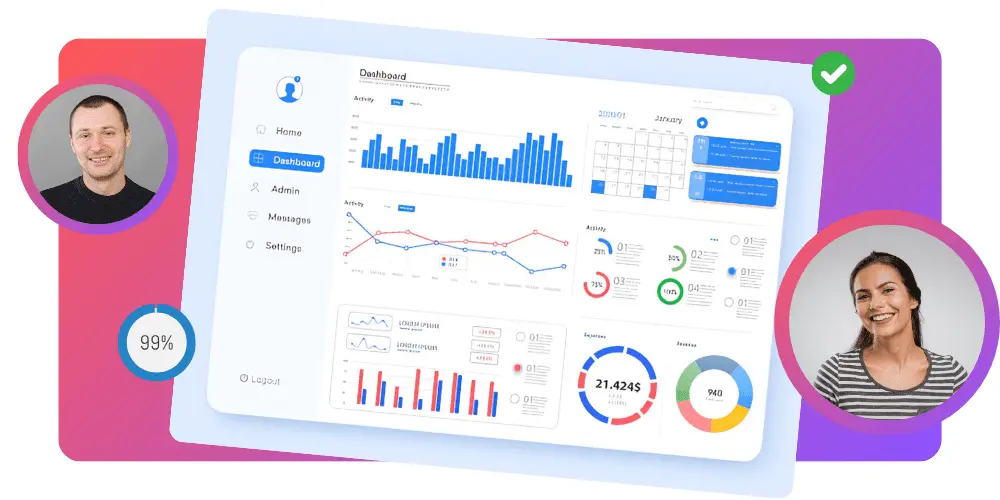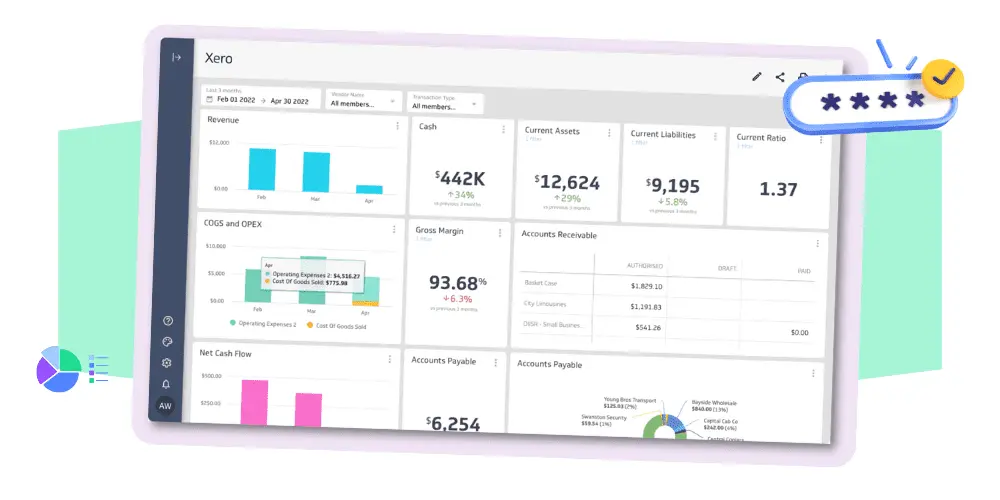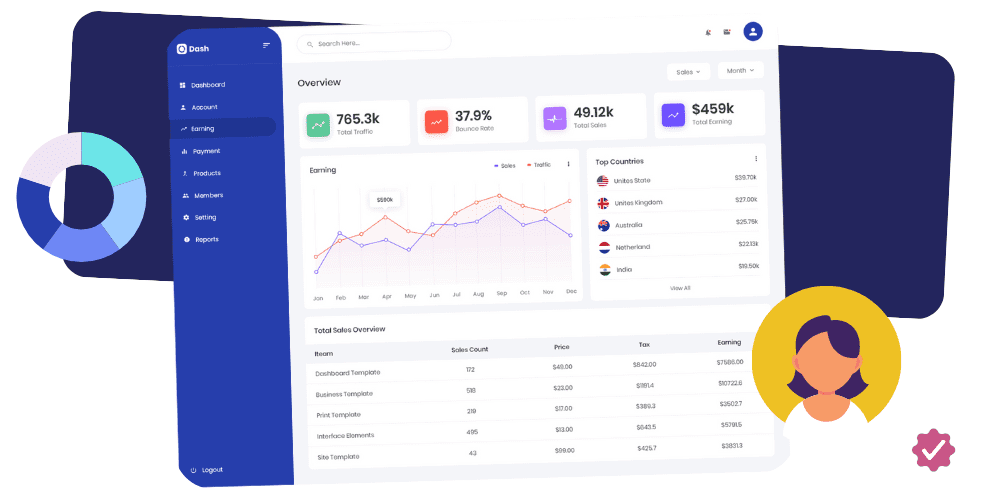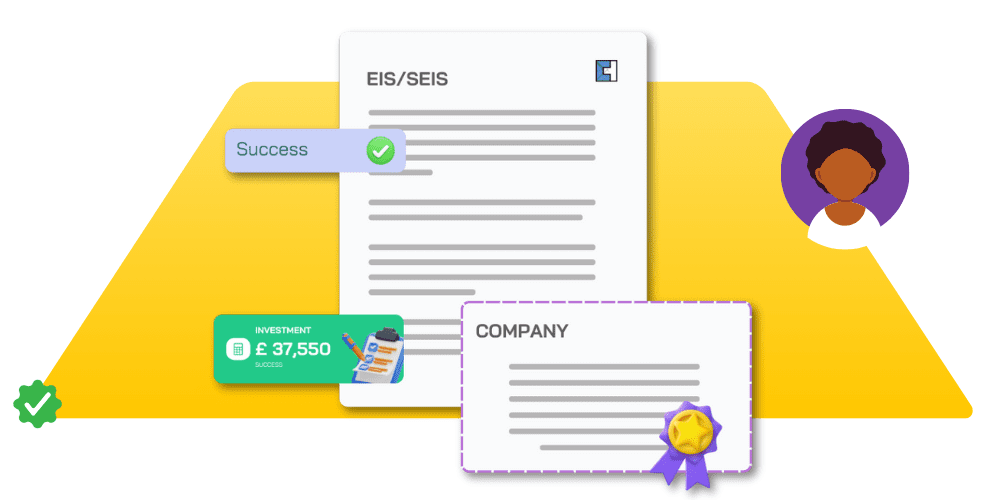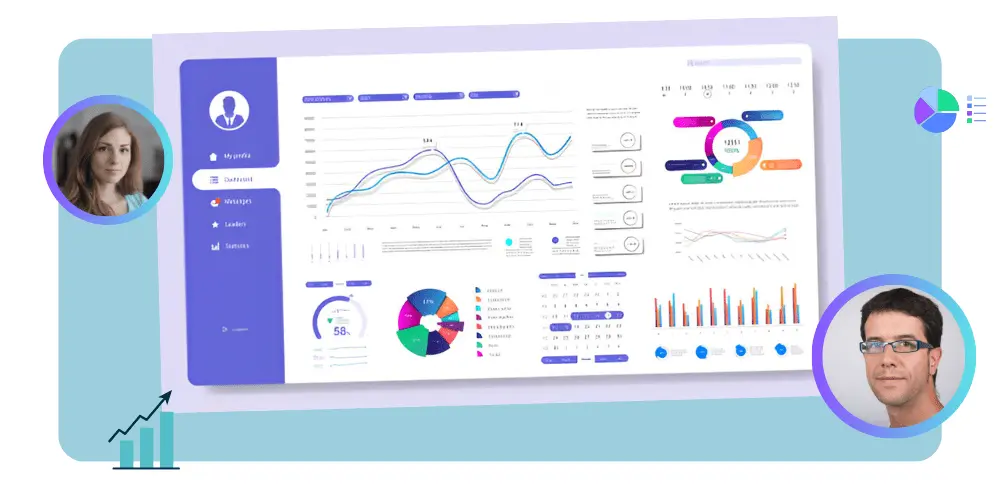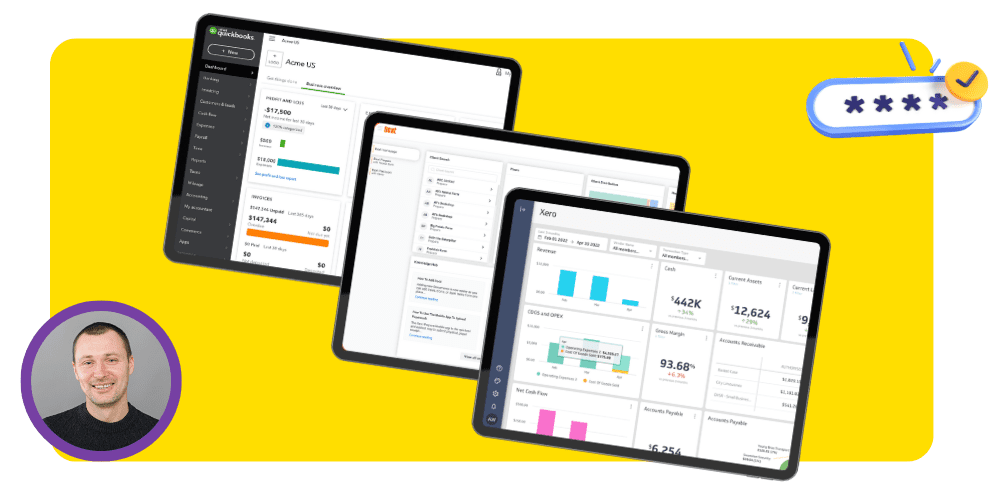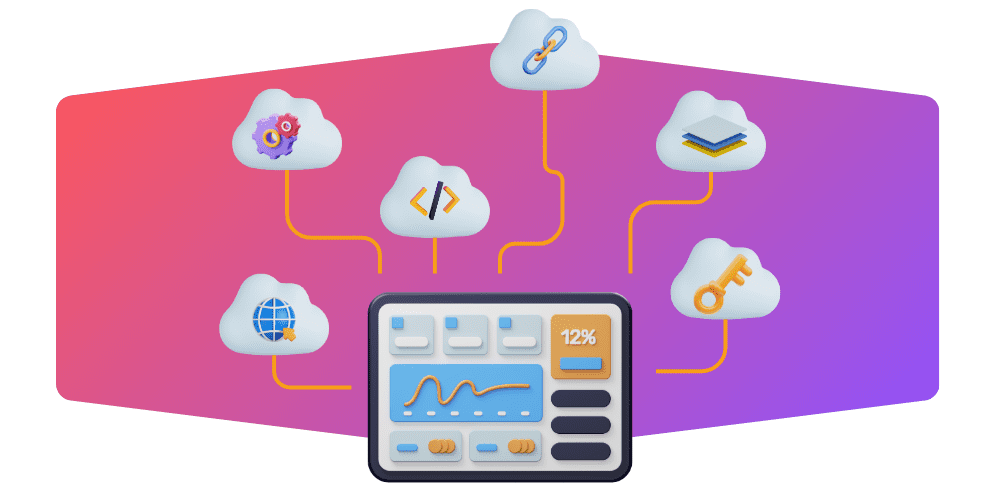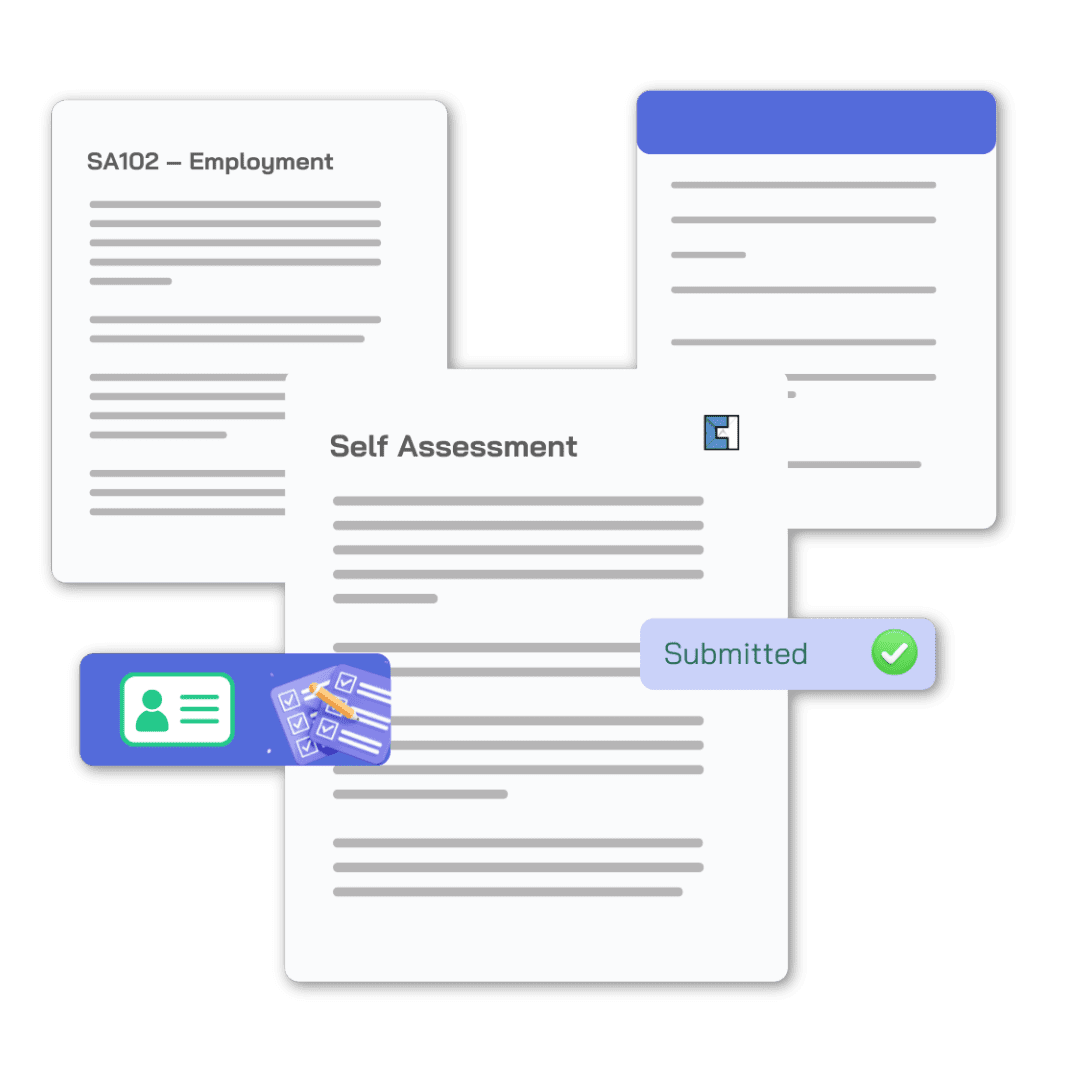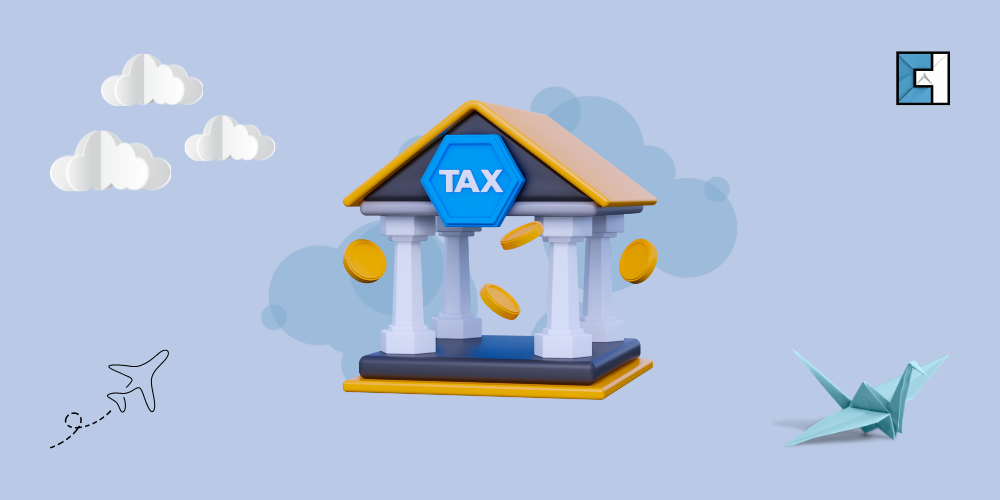Individuals and companies must successfully negotiate the intricacies of the UK tax system. Taxpayers are obliged to complete particular HMRC Self-Assessment forms every year that provide information about their financial activity during the previous fiscal year. These forms enable HMRC to assess the individual’s tax liability correctly and ensure that everyone pays the correct amount of self-assessment tax returns. We look at the most often used self-assessment tax return forms below, each designed to record various kinds of income, expenses, and tax situations.
To gain a broader understanding of UK taxation or to determine the best time to submit your Self-Assessment tax return, consider the following resources
Important UK Self Assessment tax return Forms
Main Tax Return Form, SA100
The foundation of the self-assessment process is this form which is utilised by people to declare their total yearly income. Included in this yearly income, is the income from employment, pensions, investments, rentals, and other sources. Based on the taxpayer’s income sources, self assessment sa100 form may call for a number of additional forms to be completed with it.
SA102 – Employment
This supplement is intended especially for people who make money via employment. It needs thorough information on pay, benefits in kind, and any employment-related expenses that are pertinent to taxes.
SA103 – Self-Employment
SA103S for basic matters and SA103F for more intricate business structures are available for self-employed people. The latter helps determine the yearly net profit or loss and needs business income and expense information.
Partnerships use form SA104s
A critical first step in accurately calculating tax obligations is reporting individual portions of profits or losses from partnership businesses in a partnership tax return, this doesnot calculate any tax liabilities and is only for reporting the partnership profits and the partners shares of those profits.
Landlords who want to report income from property rentals must utilise form SA105. It covers rental income and related costs that can be subtracted to get the taxable amount, such as upkeep, repairs, and other landlord costs.
For anyone with income from overseas—from jobs, rentals, pensions, or gains from foreign investments—the form, SA106 – Foreign, is required.
You can use the short version SA104s of the SA104 supplementary pages when filing your SA100 Tax Return. This version is suitable if you’re only declaring partnership trading income and interest or alternative finance receipts that have already had tax deducted by banks or building societies.
SA107 Trusts
SA107 trusts is a form designed for trustees and beneficiaries, this form handles trust income and profits to make sure that any distributions are properly taxed according to UK tax Return requirements.
SA108 – Capital Gains Tax
This form records capital gains or losses for individuals who have sold assets. It is necessary to compute the tax on shares, real estate, and other investments sold.
SA109 – Non-Residence
This form covers tax matters affecting persons who must declare income from the UK and is intended especially for those not residents of the country.
A summary form called SA110 combines data from all other forms to determine the overall tax obligation or refund owed. It guarantees that the computation accounts for all incomes and permissible deductions and the calculation of the tax liability.
SA101 – Extra Information
This form includes extra information, such as miscellaneous income, specific relief categories, and other less usual financial information, that doesn’t fit neatly into other forms.
Specifically designed for clergy and other religious leaders, SA102M—Ministers of Religion enables them to report revenue from their religious responsibilities and associated costs.
Members of Parliament SA102MP
Specifically designed for MPs, this form records and taxes parliamentary income, expenses, and allowances.
Lloyds Underwriters SA103L
Lloyds Underwriters SA103L is a particular form that details revenue and associated costs from insurance market activity for persons who work in underwriting at Lloyds.
SA104F – Partnership Full
This form guarantees each partner’s share is correctly reported by partnerships with complicated structures; this detailed form requires a lot more information than the shorter version.
SA120 – Trustees
This form is used by trustees of pension plans to record income, gains, and pertinent tax benefits related to the activities of the trust.
Non-resident companies who get rental revenue from UK property must complete SA121.
SA123 – Foreign Partners
This form guarantees that the shares and financial contributions of foreign partners in a UK partnership are correctly reported.
A thorough form covering all kinds of clerical income and allowances is SA124, Ministers of Religion.
SA900 Trust and Estate Tax Return
The HMRC Trust and Estate Tax Return requires details of income and capital gains. With the SA900 Form or a notice to complete the tax returns, HMRC may send two guides: SA950, which explains how to fill in the return, and SA951, which helps calculate the tax bill.
All trustees and personal representatives must submit the first 12 pages of the SA900, completing the sections relevant to the Trust or Estate. There are supplementary forms for specific types of income and gains, such as trade or foreign income. HMRC might send these additional forms if they think you need them based on the information they already have.
SA970 Trustee of a Registered Pension Scheme
The SA970 form, or “Tax Return for Trustees of Registered Pension Schemes,” is used by UK trustees to report a pension scheme’s income, capital gains, and tax matters to HMRC for a tax year. This form helps trustees declare income, calculate tax liability, and claim tax reliefs or repayments.
Completing the SA970 is essential for trustees to comply with HMRC regulations.
Understanding these forms and their particular requirements is essential for accurately reporting income and following UK tax regulations. Together, they address the wide range of personal and commercial financial activities that affect tax liabilities, enabling taxpayers to declare their income fully and claim any applicable deductions or credits.
Additional Resources




